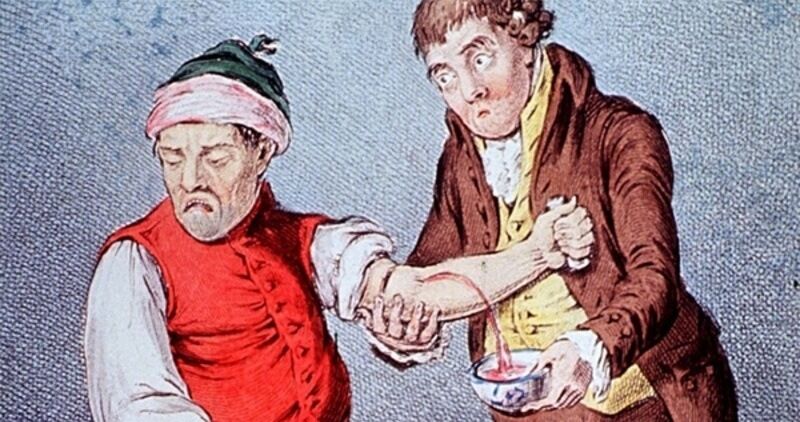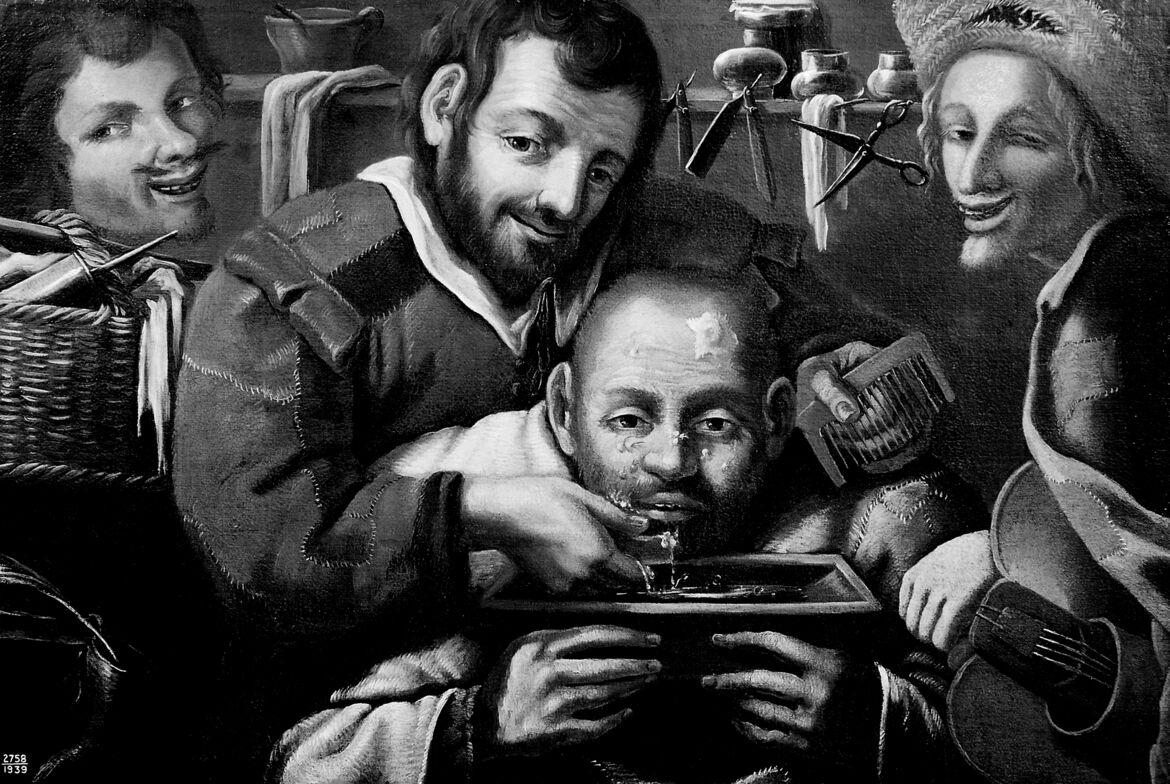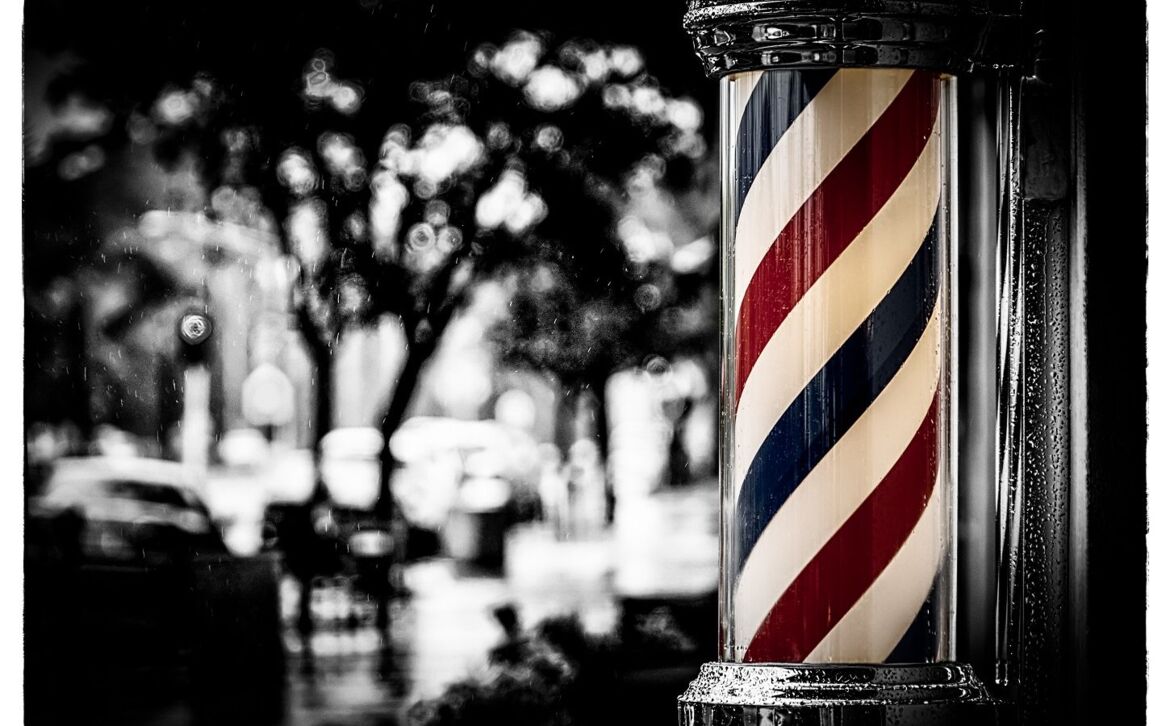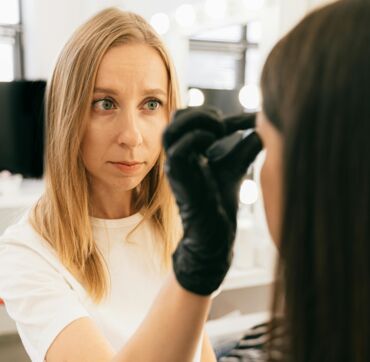Do You Know the Meaning of the Barber Pole?
- All
- Barbers
- Business Categories
- Businesses/Owners

Disclaimer: sometimes the truth is shocking. This text contains graphic descriptions of medical procedures that might disturb some of the viewers. You've been warned.
History of the Barber Pole
Ahh... red, white, and blue paired together in that universally recognized symbol. No, not THAT one—we're talking about the three stripes wrapped around the classic barber pole. For most people, the barber pole evokes images of witty shop talk, soft brushes, creamy lather, old school barbershop quartets, and trusted professionals weilding straight razors with care.
What you may not realize is that the barber pole is a far more interesting and complex symbol with a rather gruesome history. And trust us, you wouldn't want to visit a barbershop in the Middle Ages. Because just one session could be a matter of life or death! Along with a shave (that probably wasn't all that clean) and a cut (that most likely wasn't fresh at all) you could get an antiquated medical treatment that was prescribed to cure the majority of human ailments—bloodletting.
That was meant to be taken quite literally. Bloodletting was a procedure that involved cutting open a vein to release bad blood. Think of it as a very nasty historical detox. This practice originated in Ancient Egypt and was practiced for about 2,000 years before it was banned. Bloodletting was actually a very common medical procedure.
It was used to treat a host of different ailments, such as a common sore throat or a more serious disease like the black plague. The desired goal was to remove unhealthy blood from one area to help cure a patient. And all of this relates to the barber pole, because patients would oftentimes grip a staff to encourage blood flow during the procedure. All of this took place at the local barbershop!

Monks and Razors
Originally, monks would perform the bloodletting procedure. But often times, barbers were called upon to assist the monks, because barbers were skilled with razors and other sharp grooming instruments ('if barbers could cut hair and beards, they might also be handy when it comes to cutting veins,' thought the monks). However, Pope Alexander III forbid members of the church from taking part in those operations around the mid to late 1100s.
At that point, barbers became specialists for a wide variety of services and medical conditions. They'd give a man some beard swagger and create an awesome medieval hairstyle the same day they'd pull teeth, treat wounds, take care of soldiers wounded in battle, lance boils, set bones, amputate gangrenous limbs, perform bloodletting, or provide skull trepanation, which basically means drilling a hole in a person's skull to release evil spirits.
To summarize—visiting a barbershop back in the Middle Ages generally meant a bloody surgical procedure without anesthetic. Not exactly the chill kind of environment you might expect.

Barber Pole Color
The colors of the pole probably have their roots in the widely practiced bloodletting (pictured above). During this charming procedure, while the barber was letting the blood out, the patient was grasping a bloodletting rod, which was usually white. To advertise the sort of services they could provide (and what kind of fun you could expect), barbers would place the red and white symbol outside of their establishment. Hence, why the only two colors of a European barber pole are red and white.

Another theory is that after each bloodletting session, the barber-surgeon would use a cloth or white bandages to clean the patient. Then those bandages were washed and sanitized. And while the gauze wraps were still damp, they were hung outside on a spinning pole to help them dry. Because of the used rags, the original stripes on the poles were only white and red.
But some people believe the blue stripe was added to differentiate barbers from doctors, as the two professions began to grow apart. Still others think the blue is a reference to patients’ veins.
And that’s why barbershops, especially in the United States, use three colors: red, white, blue. It's not an allusion to wealthy blue bloods. Although some people still believe it's due to the national colors of the United States of America.
But that is not the end of the barber pole's significance! We have yet to discuss the brass ends that hold the colorful barber pole. It is said that one end might represent the bowl of blood that would be filled during the bloodletting. The other end symbolizes the use of leeches—charming creatures that drink blood. Yeah, basically it's all about blood.

That's just a drawing. To see real leeches, please Google it. We won't post them here.
Modern Barbers
Over time, more and more medical discoveries were made and eventually put into practice, so barbers shifted their focus. By the end of the late 18th and early 19th century, specialized training and occupational licenses were required to legally perform medical treatments.
While the field of medicine became more specialized, barbers followed suit by becoming almost entirely devoted to cutting hair, shaving necks, and grooming beards. Fortunately for barbers, although they weren’t allowed to provide the same variety of services, motion pictures were created in 1920s. And that caused waves of Americans to seek out their neighborhood barber for fresh undercuts, sleek combovers, wavy hairstyles, or razor close shaves that resembled a look that their favorite Hollywood actor had perfected on the silver screen.











